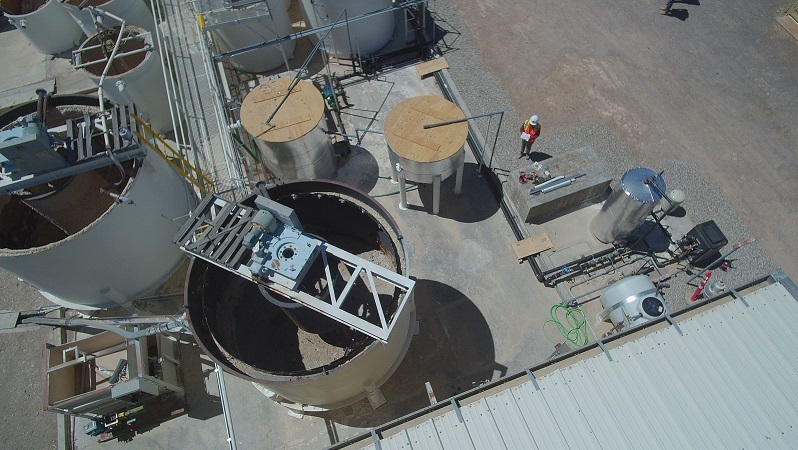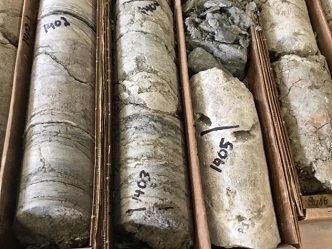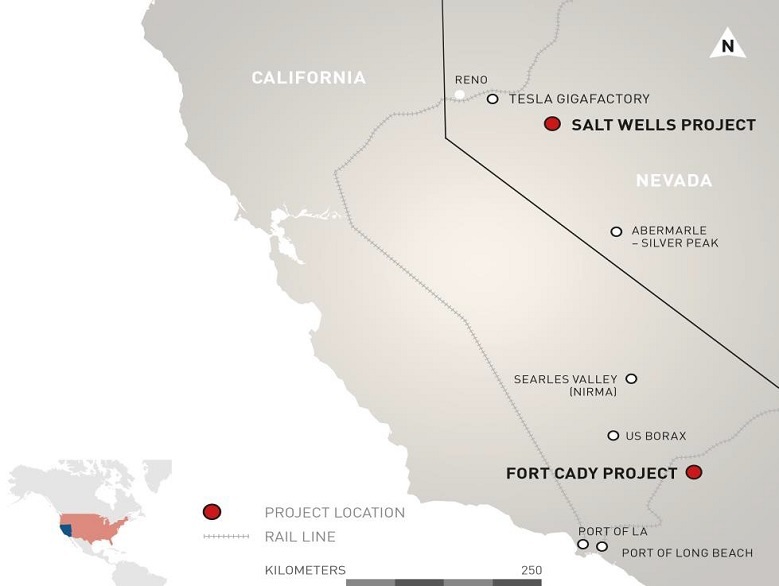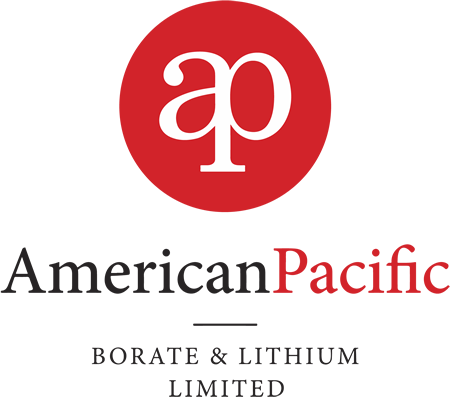Global supply of borates - the mineral form of boron - is dominated by just two producers. State-owned Eti Maden has a monopoly on the world's largest deposits in Turkey, which supply almost half of the global market. Then there is Rio Tinto Borates, which operates the Boron opencut mine about 100km west of American Pacific's recently acquired Fort Cady project.
The tight-knit producers club belies the fact that borates enjoy a demand outlook to rival any number of commodities now propelled by the clean-tech revolution. Annual demand is projected to grow by 6% until 2028, driven by boron's use in the permanent magnets of electric vehicles and wind turbines, as well as the glass panels in solar photovoltaics.
Boron goes one better in also being an essential plant nutrient, with demand from US farmers expected to grow at a compound annual rate of 9% between 2017 and 2022. These fast-growing applications are on top of traditional broad-based demand in products such as detergents, fertiliser, fibreglass, fire extinguishers, ceramics and enamels.
Against this background, the world should be awash with junior explorers and producers, but the scarcity of quality deposits, and geopolitics, have made the boron producers club one of the most exclusive in the mining world.
American Pacific gained its entry ticket with last year's acquisition of the Fort Cady project via a vendor share issue Atlas Precious Metals, a private Canadian company. The company subsequently listed on the ASX in July 2017 after raising $15 million in a strongly supported IPO. Atlas retains a 30% stake in the company, with Roy Shipes as non-executive chairman. US mining engineer and 20-year veteran of Potash Corporation, Michael Schlumpberger, is managing director.
Fort Cady is already an advanced project with some US$50 million invested by Duval from the 1980s to the early 2000. The company had established a successful pilot plant that proved the concept of in situ leaching of the colemanite orebody, which starts at a depth of 450m. Duval drilled 33 holes and 17 injection and production wells.
Schlumpberger says the project went through a few ownership changes and ultimately stopped producing boric acid when prices dropped to around US$250 per tonne. Prices are currently over US$1,000 per tonne in North America.

US-based Barr Engineering is doing design work on a process flowsheet that caters for a wider range of boric acid head grades
"The other issue from them was the small scale of the project they had in mind. They were looking to produce just 80,000 tonnes a year, and that makes for an awful long mine life. We think it makes more sense to at least treble that production target to 270,000 tonnes, which still leaves you with a 25-year mine life."
American Pacific has set a cracking pace in realising its vision for Fort Cady. A multi-rig drilling campaign began within a month of listing, resulting in a maiden JORC resource in December. Following an upgrade in February, Fort Cady's total JORC resource now stands at 120.4 million tonnes at 6.5% boron trioxide and 340 parts per million lithium.
The total resource, almost half of which sits in the indicated category, represents 7.8Mt of contained boron trioxide or 13.9Mt of contained boric acid equivalent. This would support almost 60 years of production under the development plan examined by a scoping study released in December 2017.

Fort Cady is a rare and large colemanite deposit with significant lithium potential and is the largest known contained borate occurrence in the world not owned by the big producers
The scoping study presents an impressive case for development. The company plans annual production in phase 1 of 82,000t of high-purity boric acid per annum and 18,000t of sulphate of potash, rising in phase 2 to average annual production of 246,000t and 54,000t, respectively.
Based on a total estimated capex of US$230.5 million and a long-term boric acid price of US$900 per tonne, the project is expected to generate a post-tax internal rate of return of 41% and EBITDA in its first year of full production of US$156.4 million.
The excellent margins are highlighted by an estimated average C1 cash cost of US$349 per tonne of boric acid, which shrinks to just US$193 per tonne when credits for potash are included.
American Pacific is putting even more rigour into these numbers as it works on the delivery of a definitive feasibility study in the second half of 2018, with first production targeted for 2020.
Meanwhile, two of China's biggest state-owned players have signed on as strategic partners in a move that looks set to give American Pacific an inside track to the world's largest and fastest growing boron market. China already consumes about 40% of global supply and demand is expected to grow strongly as the country urbanises and becomes a global centre of the EV revolution.
In May, Sinochem signed a strategic co-operation agreement to work with American Pacific on developing its product for the Chinese market, with the parties working towards an offtake agreement for up to half of is phase 1 production of 40,000t per annum. This was followed in June by a similar agreement with Sinomach, one of the largest consumers of borates in China.
Schlumpberger points out that Sinochem and Sinomach are each bigger than BHP.
"If we had signed agreements with BHP or Rio Tinto, I think the entire market would have said, hey, what's going on here? We have two deals and these go all the way to Beijing. I think that really points to the strategic importance of borate and certainly the Chinese are keen to find other supplies besides the effective duopoly of Eti Maden and Rio Tinto."
China is not the only target market for Fort Cady production. The project is on the doorstep of some of the richest agricultural areas in the US. Sulphate of potash and another Fort Cady product, gypsum, are also in strong demand.
The potential offtake deals are subject to all approvals being in place at Fort Cady, which is already well advanced thanks to the legacy left by Duval. In the 1990s, Fort Cady was fully permitted. Air quality and water quality permits were allowed to lapse by a subsequent owner, but American Pacific is working on reinstating these. Schlumpberger says authorities have been receptive.
Project finance will be one of the last hurdles, but Schlumpberger says the decision to break the project into two phases and the investment already sunk by Duval makes it a much easier task. Capex for phase one is only US$98 million, while phase two will be funded from cashflow.

While the focus is on getting Fort Cady to phase 2, American Pacific is already thinking about growing beyond 246,000 tonnes per annum to become a true third power in global borates. The Fort Cady orebody, which remains open to the south and east, is already big enough to support 500,000 tonnes for 25 years. The company also recently entered into an agreement to earn a 100% stake in the Salt Wells project, an early-stage boron and lithium play in Nevada but within close proximity to Fort Cady.
While the numbers coming out of Fort Cady and the sign-on by Chinese heavyweights speak for themselves, Schlumpberger agrees it would be helpful if there was more recognition by investors of the borates growth story.
"It is overlooked, but borates are linked to all the global mega-trends. They are not in great quantities in any particular use, but as someone once told me, a little bit of hell of a lot ends up being a hell of a lot."
ABOUT THIS COMPANY
American Pacific Borate and Lithium
HEAD OFFICE:
- Level 24 Allendale Square, 77 St Georges Terrace, Perth, WA 6000
- Phone: +61 8 6141 3145
- Web: www.americanpacificborate.com
- Email: info@americanpacificborate.com
DIRECTORS:
- John McKinney
- Anthony Hall
- Michael X. Schlumpberger
- Stephen Hunt
- Harold (Roy) Shipes
QUOTED SHARES ON ISSUE:
- 169.8 million
MARKET CAP (at July 19, 2018):
- A$26.7 million
MAJOR SHAREHOLDERS (as at June 2018):
- Atlas Precious Metals (29%)
- Management (36%)



























